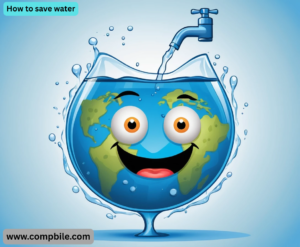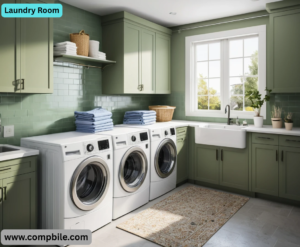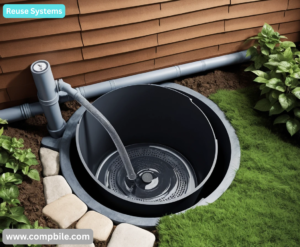How to save water Of course! Saving water is crucial for the environment, your community, and your wallet. It’s easier than you might think, and small changes can add up to a huge difference. Here is a comprehensive guide on how to save water, broken down by area of your home and life.
The Golden Rules
- Fix Leaks: A dripping faucet or a running toilet can waste hundreds of gallons per month.
- Turn it Off: Don’t let the water run while you’re brushing your teeth, shaving, or scrubbing dishes.
- Upgrade to Efficient: When old appliances or fixtures break, replace them with water-efficient models (look for the EPA WaterSense label, similar to Energy Star for appliances).
In the Bathroom (Where the Most Water is Used Indoors)
Showers:
- Take shorter showers. Aim for 5 minutes. A standard showerhead uses 2.5 gallons per minute (gpm), so a 10-minute shower uses 25 gallons!
- Install a low-flow showerhead. This is a cheap and easy upgrade. Modern low-flow showerheads provide a strong spray while using only 1.5-2.0 gpm.
- Turn off the water while lathering or shaving. Turn it back on to rinse.
Toilets:
- Check for leaks. If color appears in the bowl without flushing after 15 minutes, you have a leak.
- Don’t use the toilet as a trash can. Every flush wastes 1.6 to 5 gallons (depending on the model).
- If you have an older toilet, place a plastic bottle filled with water and pebbles (to weigh it down) in the tank to displace water and use less per flush. (Ensure it doesn’t interfere with the flushing mechanism).
Faucets:
- Install low-flow aerators on your sink faucets.
In the Kitchen
Washing Dishes:
- If you have a dishwasher, run it only when it’s full. . Modern dishwashers are more efficient than hand-washing.
- If you hand-wash, don’t let the water run. Fill one basin with wash water and another with rinse water, or use a sprayer for quick rinses.
Cooking:
- Use a bowl to wash fruits and vegetables instead of running water. You can then reuse that water for houseplants or your garden.
Laundry Room
- Wash only full loads of laundry. This can save 15-45 gallons per load.
- Consider a high-efficiency (HE) washing machine when it’s time to replace your old one. They use significantly less water and energy.
Outdoors (Where Water Use Can Double in the Summer)
Lawn & Garden:
- The best time to water is early morning or late evening to minimize evaporation.
- Check your sprinkler system for leaks, broken heads, and overspray onto pavement.
- Use a rain barrel to collect rainwater from your downspouts for watering gardens and plants.
- Use a broom, not a hose, to clean driveways, sidewalks, and patios.
- Apply mulch around trees and plants. Mulch slows evaporation, keeps the soil cool, and prevents weeds.
Choose Plants Wisely:
- Xeriscape your yard. This means using native and drought-tolerant plants that are adapted to your local climate and require less watering.
- Group plants with similar water needs together.
Car Washing:
- Use a commercial car wash that recycles water. They are often more efficient than washing at home.
- If you wash at home, use a bucket and a spray nozzle with an automatic shut-off on the hose.
Beyond the Basics: Advanced Water Savings
- These require more effort or investment but yield significant long-term results.
Audit Your Water Use:
- Read Your Water Meter: Take a reading before and after a two-hour period when no water is being used.
- Calculate Your Footprint: Use an online water footprint calculator. It can be eye-opening to see how much “virtual water” is used to produce your food, energy, and goods.
Appliance and System Upgrades:
- Hot Water Recirculation System: Instantly provides hot water to your faucets, saving the thousands of gallons wasted each year waiting for the water to heat up.
- Dual-Flush Toilet Conversion Kits: You can often retrofit an existing toilet with a dual-flush mechanism, giving you a choice of a full or partial flush.
- Water-Efficient Appliances: When replacing, look for the WaterSense label for fixtures and the ENERGY STAR label for appliances (like washers), which also save water.
Reuse Systems:
- Greywater Systems: This involves redirecting water from your shower, bathtub, and laundry (not water from toilets or kitchen sinks, which is “blackwater”) to irrigate your landscape. Crucial: Check your local and state regulations, as greywater systems often require specific, permitted installations.
- Rainwater Harvesting: Go beyond a single rain barrel. Install large cisterns (above or below ground) to capture runoff from your entire roof for non-potable uses like irrigation and toilet flushing.
Landscaping Revolution:
- Drip Irrigation: Replace sprinklers with a drip irrigation system for gardens, trees, and shrubs. It’s 90-95% efficient compared to ~65% for sprinklers.
- Soil Improvement: Healthy, compost-amended soil acts like a sponge, retaining water much better and reducing watering frequency.
- Reduce Lawn Area: Grass is typically the most water-intensive part of a landscape. Replace it with permeable paving, mulch, native ground covers, or a garden bed.
Understanding “Virtual Water”: The Hidden Cost of Everything
This is the most profound way to save water, and it happens with your wallet.
- 1 lb of Beef: ~1,800 gallons
- 1 Cotton T-Shirt: ~700 gallons
- 1 Smartphone: ~3,190 gallons
- 1 Cup of Coffee: ~37 gallons (mostly to grow the coffee plant)
How to save virtual water:
- Eat a More Plant-Based Diet: Reducing meat consumption, especially beef, is one of the single biggest actions you can take to lower your water footprint.
- Reduce Food Waste: When you throw away food, you’re also wasting all the water that went into producing it. Compost instead.
- Buy Less, Choose Well: Purchase durable goods, clothing, and electronics less frequently. Repair instead of replace.
The “Why”: More Reasons to Conserve
- Saves Energy: Pumping, heating, and treating water is incredibly energy-intensive. Saving water directly reduces energy use and greenhouse gas emissions. In California, for example, about 20% of total electricity use is related to water.
- Saves Money: Lower water bills, lower sewer bills, and lower energy bills.
- Environmental Protection: Drawing less water from rivers, lakes, and aquifers protects ecosystems and the species that live in them. It also reduces wastewater runoff, which can pollute waterways.
- Community Resilience: Conserving water, especially during droughts, ensures there is enough for essential community needs like firefighting, healthcare, and sanitation. It postpones the need for expensive new water infrastructure projects.




